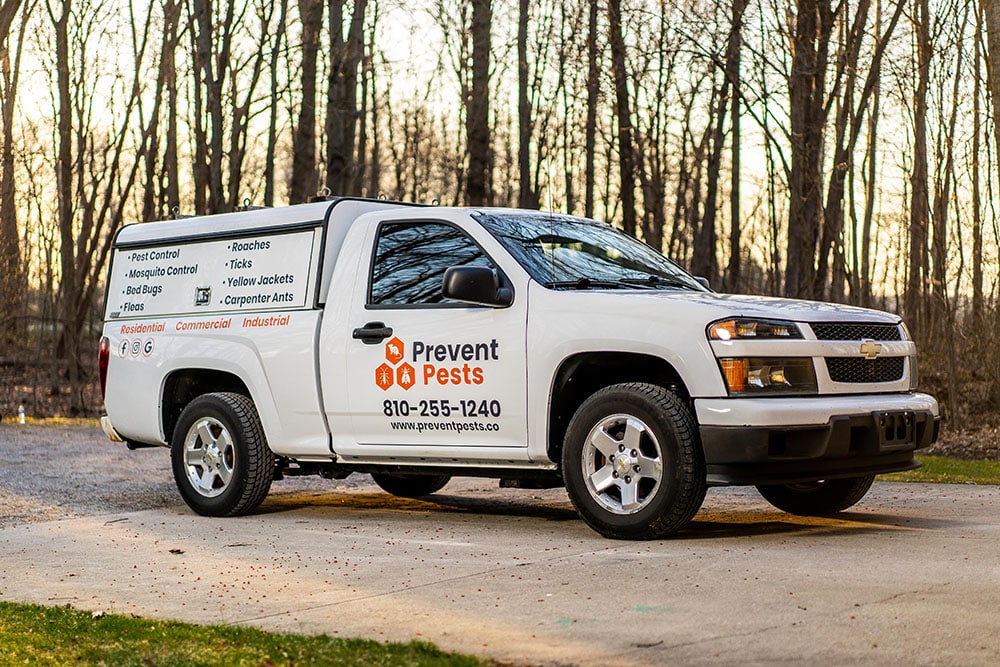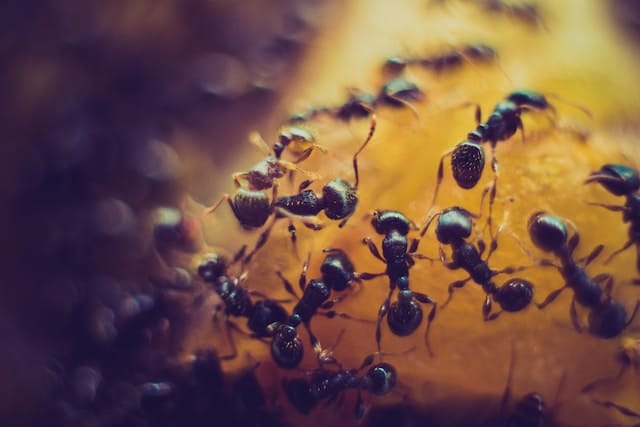Carpenter ants might not eat wood like termites, but they can still cause major problems in your home. These pests tunnel through wooden structures to create their nests, weakening your walls, floors, and support beams over time. If you’ve noticed a few large black ants indoors and tried handling the problem yourself, you’re not alone. Many homeowners turn to store-bought solutions hoping for quick results—only to discover the infestation keeps coming back. Learn why DIY carpenter ant treatments fail and what to do instead.

Carpenter Ants and Their Behavior
Identifying Carpenter Ants
Carpenter ants are usually large, ranging from ¼ to ½ inch long, and are typically black or dark reddish in color. Unlike other ants that are simply a nuisance, these pests carve out elaborate nests in damp or damaged wood. They’re often confused with termites, but they don’t eat the wood—they push it out, leaving behind piles of what looks like sawdust, also known as frass.
The Threat They Pose
Because they build their nests inside wooden structures, carpenter ants can quietly compromise your home’s integrity. Over time, a large infestation can cause significant and costly damage. You might notice rustling sounds behind walls, especially at night, or spot worker ants trailing along baseboards or countertops. These are all warning signs of an infestation that’s larger than what meets the eye.
Common DIY Treatments and Their Limitations
Over-the-Counter Sprays and Baits
Most homeowners start with sprays or bait traps found at hardware stores. While these can kill visible ants on contact, they rarely affect the heart of the problem—the nest. Carpenter ant colonies often have satellite nests spread throughout the structure, and unless you eliminate the queen and main nest, the ants will just repopulate.
Natural Remedies
Home remedies like vinegar sprays or essential oils may seem like a safe alternative, but their effects are short-lived. They might deter ants temporarily but won’t reach hidden colonies or provide long-term control. Many people repeat these methods over and over, unknowingly making the same pest control mistakes that prolong the infestation.
Reasons DIY Treatments Often Fail
Misidentification of Ant Species
Treating the wrong pest leads to the wrong solution. Many people confuse carpenter ants with other black ants or even termites. Using generic ant bait on carpenter ants is one of the most common pest control mistakes—it often has no impact on the colony and wastes valuable time while the ants continue to spread.
Incomplete Nest Elimination
Carpenter ants have a reputation for building their nests in inaccessible locations, such as roof eaves, crawl spaces, and wall voids. Unless you can locate and treat all the nests—especially the parent colony—DIY solutions won’t be enough. Worse, improper treatment can cause the colony to “bud,” splitting into multiple new nests, each with its own queen.
Overlooking Environmental Factors
Carpenter ants are attracted to damp, decaying wood. Do-it-yourself approaches often concentrate on eliminating the ants rather than addressing their initial cause. Without fixing leaks or moisture issues, or replacing water-damaged wood, you’re inviting another infestation. Ignoring these factors is one of the most overlooked pest control mistakes.
Safety and Health Concerns
Using chemicals around pets or children without proper knowledge can be risky. Pesticides included in many over-the-counter items need to be applied carefully and with ventilation. When used improperly, these treatments can pose health risks or harm beneficial insects like bees and butterflies.
Advantages of Professional Pest Control
Accurate Identification and Assessment
Professional pest technicians have the experience to correctly identify ant species and locate the main and satellite colonies. In the long term, this saves time and money by ensuring that treatment is focused and efficient.
Effective Treatment Strategies
Professionals use products and techniques designed specifically for carpenter ant removal. These solutions are stronger, longer-lasting, and more precise than anything available to the general public. They know how to treat the colony directly, ensuring the queen is eliminated and preventing the ants from returning.
Preventative Measures
In addition to getting rid of the current problem, pest control pros help you prevent future infestations by sealing entry points, addressing moisture problems, and providing routine inspections. This type of proactive care is what makes long-term carpenter ant removal successful.
Safety and Compliance
Licensed pest control businesses adhere to stringent environmental and safety standards. This implies that they can securely treat your house while lowering the threats to your loved ones and pets.
You Can’t Beat Carpenter Ants Without Knowing These Crucial Facts
DIY treatments may seem like a quick fix, but when it comes to carpenter ants, they’re rarely effective in the long run. These ants are smart, resilient, and hard to reach. Whether it’s using the wrong bait, failing to eliminate the entire nest, or ignoring environmental triggers, most DIY approaches result in wasted time and ongoing frustration.
If you’re serious about carpenter ant removal, skip the guesswork and call in professionals who know how to do the job right. Avoiding common pest control mistakes and relying on expert help is the best way to protect your home and your peace of mind.
Don’t let carpenter ants destroy your home from the inside out. Trust Prevent Pests for fast, reliable, and long-lasting carpenter ant removal. You don’t have to keep fighting the same struggle since our tried-and-true techniques get rid of the source. Call Prevent Pests today and stop the infestation before it spreads!

